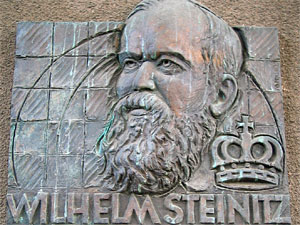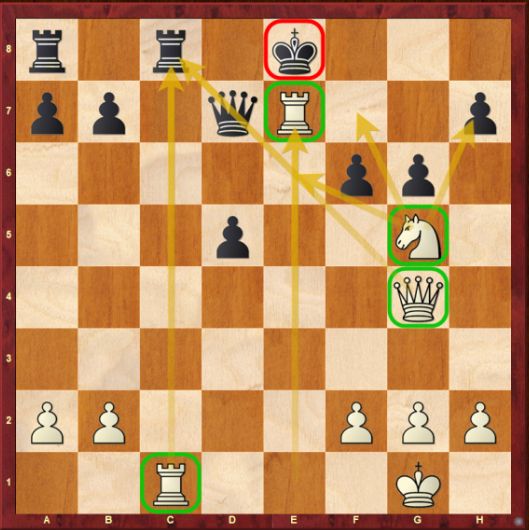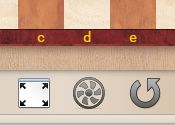As you surely know, in chess, as in other fields, it is important to study the past. But why is this the case?
Well, there are several reasons. First of all, it is about understanding why something took place several years ago, under what conditions it was played, what foundations were laid and for what benefit or meaning it had, how old masters thought, on the basis of which principles they judged the position and what effects the "work" of the old chess school has on the present. There are many more reasons why I think (and I share this opinion with a majority of people I have had the pleasure of meeting in chess) that it is essential to study the classics.
Before I go on to talk about the individual aspects, I will briefly mention which masters of the past I will primarily deal with here: Wilhelm Steinitz, Jose Raoul Capablanca and Mikhail Tal. If you study the classical games, the old masters, their development and their influence on further chess events, you can learn many things from them. At least, as long as it is done in the right context and under the right conditions.
When I started playing chess, my focus was mainly on studying openings, gaining first practical experience against other chess novices and (how could it be otherwise) solving tactical problems. These areas are undoubtedly very important and should be optimised more and more in the future. And yet, in my opinion, there is much more that is very important for one's own chess education. In this context, the study of the classics comes into play. It took quite a while before I began to understand that a good chess player also has to deal with the games and players of the past, to study their games, to understand interesting approaches and principles, rules of thumb etc., and to understand why something was played that way at that time, why a game is either still respected today or not.
I probably wouldn't have been so taken up and impressed by this if my squad trainer at the time, FM Wolfgang Pajeken, hadn't encouraged me, again and again, to sit down at home with a book of the classics and think about what I find in them. A big thank you is due to him!
So, little by little, I began to understand why it was so important and, what's more, that I really enjoyed being exposed to intellectual productivity.
Some may now object that everything was completely different in the past and has little significance today, let alone relevance. But this assumption is fundamentally wrong. I would say that most things in the past were just kept more simple, and things showed less innovative and developmental progress than is the case now. But that is the normal course of things, and anything but bad. I will not elaborate on this now, I firmly assume that everyone knows what I am mainly alluding to (engines, Alpha Zero, Stockfish, Fat Fritz, AI...).
Wolgang Pajeken always used to say that a certain amount of "chess culture" should not be missing if one wanted to become better at chess. I would even say that the acquisition of an elementary chess culture underlines the golden era we live today, with all kinds of opportunities to improve. It is about appreciation of our time, and the juxtaposition of that time. It is extremely fascinating to see what has developed in a few hundred years of chess!
The world champions of chess history until today are:
1: Wilhelm Steinitz (mentioned in this article).
2: Emmanuel Lasker
3: Jose Raoul Capablanca (mentioned in this article)
4: Alexander Alekhine
5: Max Euwe
6: Mikhail Botwinnik
7: Vassily Smyslov
8: Mikhail Tal (mentioned in this article)
9: Tigran Petrosian
10: Boris Spasski
11: Robert James Fischer (Bobby Fischer)
12: Anatoly Karpov
13: Garri Kasparov
14: Vladimir Kramnik
15: Viswanathan Anand (Vishy Anand)
16: Magnus Carlsen (reigning World Champion)
Visualisation
In the following diagrams I have tried to illustrate the dynamics of the positions with the help of arrows and squares in the colours red, yellow and green. This form of visualisation is highly relevant to me – it feels like I am producing little works of art. Using arrows and highlighting squares gives my comments a new meaning. With the help of this function, I can see and understand immediately what is going on in a position, even without reading much of my comments or replaying the supporting variations.
At the bottom of this article you will find the three games I have chosen in a replayer. There you can go through all the moves, and even use the built-in engine to help with your analysis.
 Wilhelm Steinitz
Wilhelm Steinitz
 The Austrian-American Wilhelm Steinitz laid the foundations of positional chess in 1886 by formulating his "principles". These soon found favour with the chess players of the time, but are now largely regarded as outdated. One of his most famous games can be seen here:
The Austrian-American Wilhelm Steinitz laid the foundations of positional chess in 1886 by formulating his "principles". These soon found favour with the chess players of the time, but are now largely regarded as outdated. One of his most famous games can be seen here:
The Phenomenal Combination: Steinitz-Von Bardeleben, Hastings 1895

Position after 16.d5!

Position after the phenomenal 22.Rxe7+!!

Position after the final 25.Rxh7+!
 Jose Raoul Capablanca
Jose Raoul Capablanca
Cuban Jose Raoul Capablanca was the third world chess champion in history and was known for his positional understanding and stringent logic. Especially in the endgame he was a true virtuoso. I was able to learn a lot from his games, and I am still impressed today by how consistent and coherent his playing style was. Here is a game of his that I find very instructive.
The imprisoned bishop: Winter-Capablanca, Hastings 1919

Position after 15...f6

Position after the explosive move 23...c4!

Position after the final move 29...Rxd4 –+.
Note that the Bg3 had to linger there pretty much the whole game, and just couldn't have a say! Black now wins very easily by throwing his a-pawn into the balance, binding the white rooks and thus converting his decisive advantage into the full point. White, on the other hand, can only stand by and watch, as his bishop is so incredibly bad! (Black basically played most of the time with one piece more!)
He was a child prodigy and he is surrounded by legends. In his best times he was considered to be unbeatable and by many he was reckoned to be the greatest chess talent of all time: Jose Raul Capablanca, born 1888 in Havana.
 Mikhail Tal
Mikhail Tal
Now I come to the genius (and also my absolute favourite player) who has probably shaped and moulded me the most. He is rightly called the "Wizard of Riga". His style of play was completely different from that of his predecessors. I would summarise it as chaotic, willing to make courageous sacrifices and seeking complications wherever possible. From today's perspective, many of his largely ingenious, highly praised sacrifices were objectively wrong or at least questionable. But at the time it brought a completely fresh breeze into the otherwise very staid and solid game. I could put hundreds of his games here, as I find all of them very impressive and truly great, no matter what today's engines think of them. After all, one should never underestimate the role of psychological elements (like pressuring the opponent, attacking, playing surprising moves, etc.), no matter which area one examines.
On this DVD Dorian Rogozenco, Mihail Marin, Oliver Reeh and Karsten Müller present the 8. World Chess Champion in video lessons: his openings, his understanding of chess strategy, his artful endgame play, and finally his immortal combinations.
The momentum of development: Tal-Suetin, Tiflis 1969

Position after 13.bxc3

Position after 17.f5! (compare White's development vs Black's development!)

Position after the short final sequence 21.exf7+. Black has been taken down in the centre!
 On the above replayer you can go through all the moves of the above three games. Note that you can maximise the board, or click on the round arrow icon below the board to "flip" it for the Capablanca game. And clicking the fan icon will start the built-in engine, which can be used to answer any "why not" and "what if" questions that arise.
On the above replayer you can go through all the moves of the above three games. Note that you can maximise the board, or click on the round arrow icon below the board to "flip" it for the Capablanca game. And clicking the fan icon will start the built-in engine, which can be used to answer any "why not" and "what if" questions that arise.
I hope to have given you good examples with the article and the games shown in it to underline the relevance of studying the classics! I look forward to feedback!
.jpeg)

















 Wilhelm Steinitz
Wilhelm Steinitz  The Austrian-American Wilhelm Steinitz laid the foundations of positional chess in 1886 by formulating his "principles". These soon found favour with the chess players of the time, but are now largely regarded as outdated. One of his most famous games can be seen here:
The Austrian-American Wilhelm Steinitz laid the foundations of positional chess in 1886 by formulating his "principles". These soon found favour with the chess players of the time, but are now largely regarded as outdated. One of his most famous games can be seen here: 


 Jose Raoul Capablanca
Jose Raoul Capablanca


 Mikhail Tal
Mikhail Tal


 On the above replayer you can go through all the moves of the above three games. Note that you can maximise the board, or click on the round arrow icon below the board to "flip" it for the Capablanca game. And clicking the fan icon will start the built-in engine, which can be used to answer any "why not" and "what if" questions that arise.
On the above replayer you can go through all the moves of the above three games. Note that you can maximise the board, or click on the round arrow icon below the board to "flip" it for the Capablanca game. And clicking the fan icon will start the built-in engine, which can be used to answer any "why not" and "what if" questions that arise.




